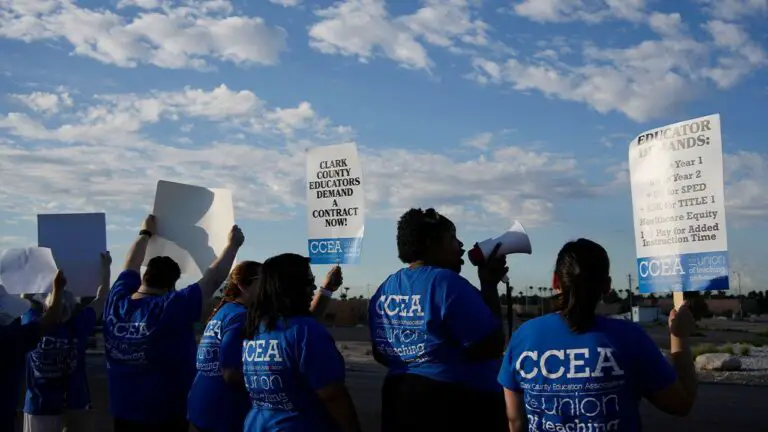Judge Orders Teachers Union to End Strikes Amid School Closures
A judge has issued a ruling to put a stop to teacher absences that led to school closures in the Las Vegas area. These absences, deemed by the judge as a “clear strike,” have occurred during a contract dispute in a state where it is unlawful for public employees to go on strike.
School Shutdowns and Absences
Since September 1st, unexpected staff shortages have led to eight schools canceling classes for the day, with two others combining classes. This disruption has impacted the Clark County School District, which is the largest in Nevada, serving approximately 295,000 students. In one instance, a school had 87% of its teachers calling in sick on the same day.
Judge Crystal Eller of the Clark County District emphasized that the notion of these being genuine sick call-outs is absurd. If the teachers’ union fails to halt the strike, consequences could include fines up to $50,000, as well as potential jail time or termination for striking members and union leaders.
Union Denies Responsibility
The Clark County Education Association, representing about 18,000 teachers, has denied responsibility for the surge in absences, which continued with the sudden closure of four more schools. The school district already faces over 1,100 teacher vacancies, a number the education association claims is nearly doubled when factoring in substitutes filling open positions.
Union leader John Vellardita respectfully disagrees with the judge’s order and plans to appeal to the state Supreme Court.
National Context
These contract negotiations are happening amidst a nationwide wave of labor unions challenging worker treatment, including Hollywood writers, Detroit auto workers, Los Angeles school employees, and Las Vegas Strip hospitality workers.
Judge’s Sympathy and Call for Good Faith Effort
Judge Eller expressed sympathy for the difficult situation but clarified that Nevada public employees are prohibited from striking. She urged the school district to make a “good faith” effort to reach an agreement with the union.
Negotiations began in March, covering topics like pay, benefits, and working conditions. Tensions escalated this summer when the union threatened action if a contract wasn’t reached before the 2023-24 school year. Actions included teachers refusing to work beyond their contracted hours.
Impasse and Arbitration
Negotiations resumed recently, but the school district announced an impasse before the hearing, stating that arbitration was the only way to resolve the dispute after 11 failed bargaining sessions, citing the union’s “budget-busting” demands.
Union’s Demands vs. District’s Offer
The union is seeking 18% across-the-board pay increases over two years, additional compensation for special education teachers and those in high-vacancy, often low-income schools, as well as increased pay for teachers working extended hours at certain campuses.
The district’s final offer includes a 9% salary increase in the first year of a new contract, a new pay scale emphasizing education and experience, and incentives for special education teachers and hard-to-fill positions.
Impact on Students
The teacher shortages have affected thousands of students. Andrea Brai, a parent with a child at Sewell Elementary, where 72% of licensed staff members called in sick, stressed that students’ needs should not be overlooked amidst the contract dispute.
“When you become a teacher,” Brai said, “you should go into this profession with that in mind.”

